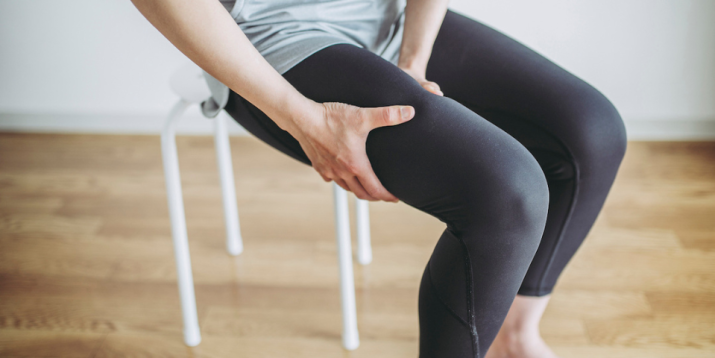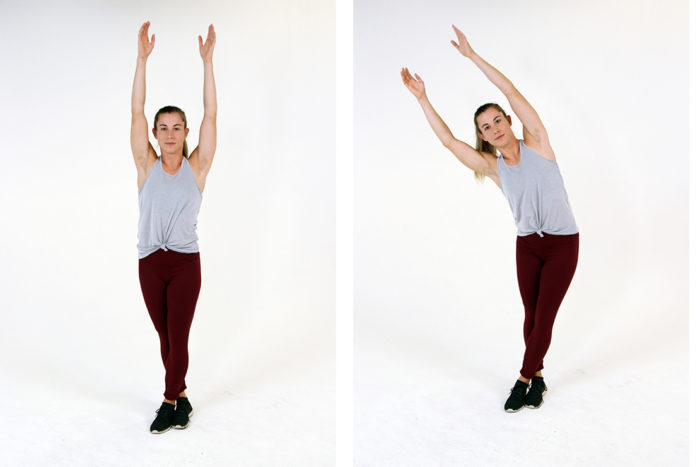Got Hip or Knee Pain? These IT Band Stretches Can Help

If you have tight iliotibial (IT) bands, stretching seems like the logical solution. But dealing with IT band syndrome, which accounts for 22 percent of injuries to the lower extremities, is not so simple; most “IT band stretches” don’t even target the IT band.
Here’s what you should know about relieving IT band tightness and what causes it in the first place.
What Is the IT Band?

The IT band, or iliotibial tract, is a piece of fascial tissue that runs along the outside of the hip and thigh. It begins at the ilium (pelvis) and ends at the tibia in the lower portion of the leg.
According to Dr. Theresa Marko, PT, DPT, MS, OCS, board-certified orthopedic clinical specialist in physical therapy and owner of Marko Physical Therapy, PLLC, in New York City, the IT band has an important, multi-faceted job.
“It helps to support your pelvis and your hip during activities like walking, running, and going up and down stairs so that your leg and knee stay aligned with your hip and that your knee doesn’t fall in towards the other knee,” she says.
“It also has a huge role in helping the knee to flex/bend and extend/straighten. The lower portion of the IT band changes its function with literally every step we take, helping to straighten and bend the knee,” Marko adds.
How to Stretch the IT Band
It’s not uncommon, especially among athletes and active people, for the IT band to feel painfully tight, which can even cause pain in the outer knee. So what are the best IT band stretches?
Technically, there aren’t any, says Lauren Lobert Frison, DPT, OMPT, CSCS, owner of APEX Physical Therapy in Brighton, Michigan. “Your IT band is not contractile tissue, like muscle is,” she explains. “Any IT band stretches you find are really just impacting the tensor fascia latae (TFL) muscle,” she says. Located in the hip, the TFL is a small muscle to which the IT band connects.

To stretch and target the TFL muscle, Marko recommends the standing side bend.
Standing side bend

- Stand with your feet about hip-width apart. Lift your arms straight overhead, and cross your left ankle over your right.
- Push your hips to the left and bend your upper body to the right. Hold for 30 seconds.
- Come back through the center. Release the stretch, and uncross your legs.
- Repeat on the opposite side.
You have the option to perform standing side bend pose next to a wall for balance.
IT band massage

Instead of IT band stretches, Marko recommends tissue mobilization or massage for tight IT bands. “You want to loosen the fibers of the IT band, so it stops being so taut and pulling so hard on your bones,” she says.
A physical therapist can administer massage, use a massage gun, or perform cupping, but you can also do self-myofascial release using a foam roller, massage stick, or Marko’s favorite self-massage tool: the tennis ball.
“A tennis ball is a nice size and pressure, acting like an elbow being pressed in,” she says.
To massage your IT band and the surrounding tissues, lie on your side and position a tennis ball between your IT band and the floor. Relax as much as you can, allowing the tennis ball to “melt” your tissues. Slowly work your way down the IT band by slightly adjusting the tennis ball’s position.
Side-lying leg lift

Stretching and massage can help relieve the symptoms of a tight IT band, but if you want to prevent IT band pain, you need to address the underlying issue.
Again, a physical therapist can provide an individualized assessment, but it’s common for people with tight IT bands to have weak gluteus medius muscles. The side-lying leg lift can help strengthen this portion of the glutes.
- Lie on your side with your hips stacked on top of each other. Use your bottom arm to prop up your head and your top arm to help maintain balance.
- Roll forward slightly and position the bottom leg a few inches behind you.
- Lift the top leg 45 degrees. “More than that, you are using your back muscles to do the lifting,” Marko says.
- Hold for one second before lowering the leg. Complete all reps on one side before switching sides.
What Causes a Tight IT Band?
The IT band helps stabilize the hip and knee during activities like walking, running, and climbing. When the muscles around the hip and/or knee are not pulling their weight in these movements, the IT band picks up the slack, causing it to tighten. So incorporating strength training — specifically glute-targeted moves — can help relieve pain or discomfort.
Walking or running in worn-out soles may contribute to your tight IT bands, so it helps to replace your athletic shoes regularly.
And if you’re training for an endurance event, drastic spikes in activities like running and cycling can trigger IT band tightness and pain. Take a gradual approach to increasing your mileage, and your body will thank you.
